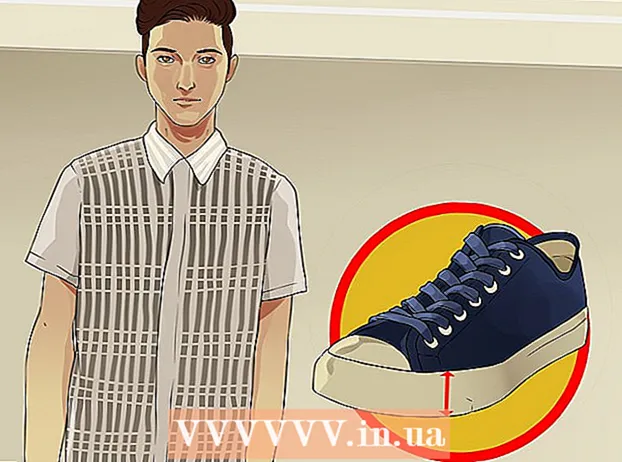Author:
Gregory Harris
Date Of Creation:
10 August 2021
Update Date:
1 July 2024

Content
- Steps
- Part 1 of 3: How to remove dirt
- Part 2 of 3: How to Polish a Violin
- Part 3 of 3: How to keep your instrument clean
- Tips
So, you have a violin, and you already know how to care for it. What do you know about everyday tool cleaning? How to protect it from rosin and sweat? This article will teach you how to properly clean your violin after use so that it stays in top condition at all times.
Steps
Part 1 of 3: How to remove dirt
 1 Wash your hands. After playing, rosin, sweat and dust will probably remain on your hands, which should not accidentally fall on various parts of the violin.
1 Wash your hands. After playing, rosin, sweat and dust will probably remain on your hands, which should not accidentally fall on various parts of the violin. 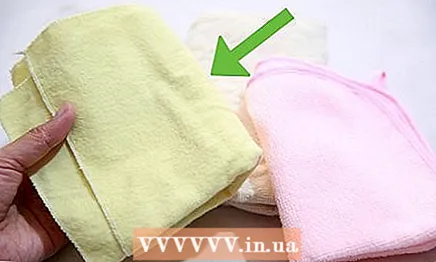 2 Use several cleaning rags. Using rags, you can protect the violin from rosin and other substances, and you can also remove fingerprints and other marks to preserve the original appearance of the instrument. You need at least two soft, clean, lint-free rags to wipe different parts of the violin.
2 Use several cleaning rags. Using rags, you can protect the violin from rosin and other substances, and you can also remove fingerprints and other marks to preserve the original appearance of the instrument. You need at least two soft, clean, lint-free rags to wipe different parts of the violin. - Store rags in the case along with the violin so that they are always close at hand.
- You can buy special violin cleaning wipes like “SHAR” or “Glaesel”, but you can get by with a handy piece of cloth (like flannel). The main thing is that the rag should be soft and not scratch the instrument.
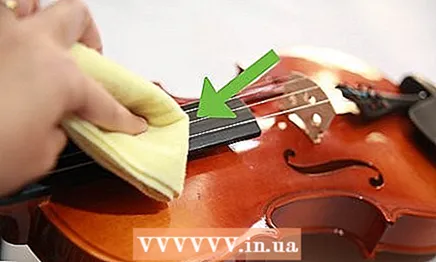 3 Wipe the strings. The strings must be wiped clean after each use of the violin, as rosin builds up on them very quickly, which makes the instrument sound different. This simple action should become an ongoing habit.
3 Wipe the strings. The strings must be wiped clean after each use of the violin, as rosin builds up on them very quickly, which makes the instrument sound different. This simple action should become an ongoing habit. - Using a single rag, wipe the rosin off each string individually, sliding up and down in a sliding motion. Be sure to remove any rosin flakes that have accumulated on the strings.
- If you can't just wipe off the rosin layer on the strings, use pure alcohol to do this. Apply a few drops of alcohol to a rag and wipe the strings, but be careful not to get the alcohol on other parts of the violin and damage the varnish.
 4 Wipe the bow. Rosin quickly builds up not only on the strings, but also on the bow. You can use the same cloth as for the strings, as you will be removing the same substance from the bow.
4 Wipe the bow. Rosin quickly builds up not only on the strings, but also on the bow. You can use the same cloth as for the strings, as you will be removing the same substance from the bow. - As with strings, just take a napkin and rub the bow along your hair. Move up and down easily, but not across the grain.
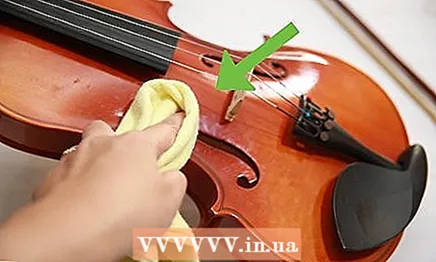 5 Wipe the top of the violin. The top is on the body, and the strings are stretched above it, which go to the neck. Use a different rag for this step to avoid rubbing the violin with rosin or other substance.
5 Wipe the top of the violin. The top is on the body, and the strings are stretched above it, which go to the neck. Use a different rag for this step to avoid rubbing the violin with rosin or other substance. - Be careful not to catch the rag in the “F” -shaped resonator holes. These holes are very finely machined, damage to which can alter or degrade the sound of the violin.
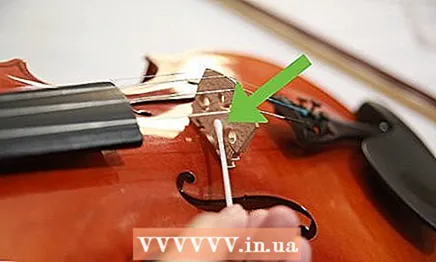 6 Clean the stand. While playing the violin, rosin also collects on the stand. Use a rag to remove the rosin from under the stand, but do not use excessive force to avoid damaging such a fragile element.
6 Clean the stand. While playing the violin, rosin also collects on the stand. Use a rag to remove the rosin from under the stand, but do not use excessive force to avoid damaging such a fragile element. - You can use cotton swabs to remove rosin from hard-to-reach areas.
Part 2 of 3: How to Polish a Violin
 1 When to polish a violin? Polishing the violin allows you to give the varnish an updated look, and also allows you to remove all plaque that accumulates after several years of using the instrument.
1 When to polish a violin? Polishing the violin allows you to give the varnish an updated look, and also allows you to remove all plaque that accumulates after several years of using the instrument. - If the violin is new or looks good, then it does not need to be polished. But if the instrument has a dull appearance and has not been polished for a long time (a year or more), then now is the time. If you are unsure, seek advice from a string instrument restorer.
 2 How to choose the right polish? Use only violin polish, not furniture polish or water, to avoid damaging the varnish and ruining the sound.
2 How to choose the right polish? Use only violin polish, not furniture polish or water, to avoid damaging the varnish and ruining the sound. - Never use polishes or cleaners for artisans or antique violins, as the oils they contain can cause cracks and make it difficult to repair the instrument.
- Polishes usually contain oil, which can ultimately lead to cracks in the wood and damage the tool. That is why there is an opinion that polishes should not be used at all for the maintenance of violins.
 3 Use a polishing cloth. If you decide to use a polish, be sure to follow all the instructions on the packaging and only polish the body of the instrument.
3 Use a polishing cloth. If you decide to use a polish, be sure to follow all the instructions on the packaging and only polish the body of the instrument. - Apply the polish to a rag, not directly to the tool. Use a rag to remove all stains, dirt and accumulated rosin. Polish the case on all sides, but be careful around the resonator holes so that no polish builds up in them. Then take a new rag and remove excess polish so that no harmful moisture gets inside the violin.
- Do not spill polish on the strings and stand as it can build up on these elements and affect the sound of the instrument.
Part 3 of 3: How to keep your instrument clean
 1 Only touch the tool in the right places with your hands. Oil and sweat are present on the skin. They can corrode the varnish and leave marks on the surface of the violin.The smaller the violin's skin contact area, the longer your instrument will retain its sound and beautiful appearance.
1 Only touch the tool in the right places with your hands. Oil and sweat are present on the skin. They can corrode the varnish and leave marks on the surface of the violin.The smaller the violin's skin contact area, the longer your instrument will retain its sound and beautiful appearance. - Practice properly lifting and holding the violin to develop the habit and stop grabbing the violin by the body.
 2 Remember to clean the case. It's pretty obvious that a violin can't stay clean in a dirty case, but people often forget this. Remove everything from the case and vacuum the interior with a vacuum cleaner every week or whenever you notice dust, dirt or rosin in it.
2 Remember to clean the case. It's pretty obvious that a violin can't stay clean in a dirty case, but people often forget this. Remove everything from the case and vacuum the interior with a vacuum cleaner every week or whenever you notice dust, dirt or rosin in it. - This action will also help prevent dust mites from feeding on bowed hair.
 3 Periodic professional tuning. If cracks start to appear on the violin or you notice other changes, take your instrument to a music store or a good violin maker.
3 Periodic professional tuning. If cracks start to appear on the violin or you notice other changes, take your instrument to a music store or a good violin maker.
Tips
- If you live in extremely dry or humid climates, a quality humidifier can be used to prevent cracks and warpage of the instrument.
- The interior of the case should also be cleaned, but is often overlooked. To remove the dust inside the violin, pour some rice through the resonator holes and roll the rice back and forth. Then turn the violin over and shake the rice grains out.



